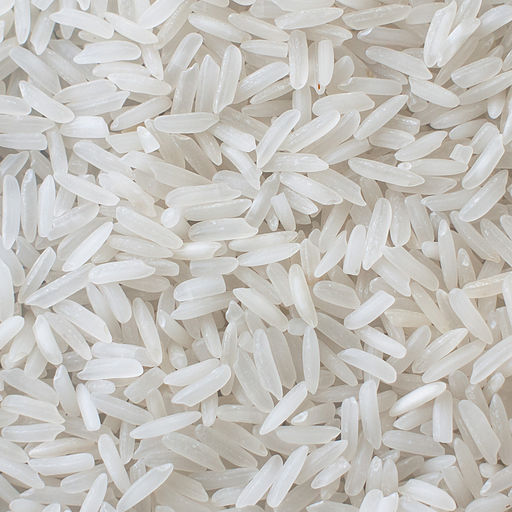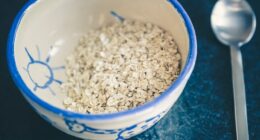Jasmine rice is a fragrant, long-grain rice with a floral aroma and subtle nutty flavor, while white rice is a general term for refined rice with the bran and germ removed.
TL;DR Jasmine rice Vs. White rice
White rice is a general term that refers to polished rice with the bran and germ removed. It is commonly used as a staple food due to its versatility and neutral flavor. White rice can come in different varieties such as long-grain, medium-grain, or short-grain.
Jasmine rice is a specific variety of aromatic long-grain rice known for its fragrant aroma and slightly sticky texture when cooked. It is primarily grown in Thailand but has gained popularity globally due to its unique taste profile.
What is white rice and its characteristics?

This versatile staple is a blank canvas in the culinary world, ready to soak up flavors and complement a variety of dishes. White rice is essentially milled and polished brown rice, with both its husk and bran layers removed through processing.
What sets white rice apart from other varieties is its fluffy texture and mild flavor. When cooked, it becomes tender with separate grains that don’t clump together – perfect for creating those picture-perfect pilafs or serving alongside saucy stir-fries. Its neutral taste allows it to play well with different ingredients and spices, making it an ideal accompaniment to various cuisines.
White rice also comes in different grain lengths – short-grain, medium-grain, and long-grain – each offering distinct characteristics. Short-grain white rice tends to be more sticky when cooked, making it excellent for sushi or creamy puddings. Medium-grain white rice strikes a balance between stickiness and fluffiness, while long-grain white rice boasts a light texture that works wonderfully in dishes like biryanis or fried rices.
In terms of nutritional content, white rice lacks some of the fiber present in brown or whole grain variants due to its removal during processing. However, it remains a good source of energy-rich carbohydrates while being low in fat and cholesterol-free. Additionally, many brands now fortify their white rice with essential vitamins and minerals to enhance its nutritional value.
What is jasmine rice and its characteristics?

Jasmine rice, also known as Thai fragrant rice, is a long-grain variety that originated in Thailand. It is renowned for its distinctive aroma and delicate flavor, which has made it a popular choice among rice lovers worldwide.
One of the key characteristics of jasmine rice is its tender and slightly sticky texture when cooked. This gives it a pleasant chewiness that pairs well with various dishes. Whether you’re enjoying it alongside curries, stir-fries, or even as part of sushi rolls, jasmine rice adds a satisfying mouthfeel to your meal.
In terms of appearance, jasmine rice stands out with its pearly white grains that are slender and elongated in shape. These grains have an inherent softness that contributes to the fluffy nature of this type of rice once cooked.
Another notable characteristic of jasmine rice is its ability to absorb flavors from other ingredients effortlessly. This makes it an excellent companion for bolder-tasting dishes where the fragrance and subtlety of the grain can complement stronger flavors without overpowering them.
Jasmine rice’s unique combination of fragrance, texture, and flavor sets it apart from other types of white rice varieties. Its versatility in culinary applications makes it a favorite choice not only in Southeast Asian cuisine but also around the world by those seeking an aromatic twist to their meals.
Jasmine rice Vs. White rice – Key differences
| Aspect | Jasmine Rice | White Rice |
|---|---|---|
| Type of Rice | A specific aromatic long-grain rice | A general term for refined rice |
| Aroma and Flavor | Has a floral aroma and subtle nutty flavor | Has a neutral, mild taste |
| Appearance | Typically translucent and slightly off-white | Bright white grains |
| Texture | Tends to be slightly sticky when cooked | Varies by variety; can be sticky or non-sticky |
| Popular Use | Commonly used in Asian and Thai cuisine | Widely used in various cuisines |
| Fragrance Retention | Retains its fragrant aroma when cooked | Doesn't have a distinct fragrance |
| Regional Origin | Commonly associated with Thailand | Widespread, not tied to a specific region |
| Cooking Techniques | Suitable for steaming, stir-frying, and as a side dish | Versatile for various cooking methods |
Image Credits
Featured Image By – KusiD, CC BY-SA 4.0, via Wikimedia Commons
Image 1 By – Peachyeung316, CC BY-SA 4.0, via Wikimedia Commons
Image 2 By – Takeaway, CC BY-SA 3.0 , via Wikimedia Commons









